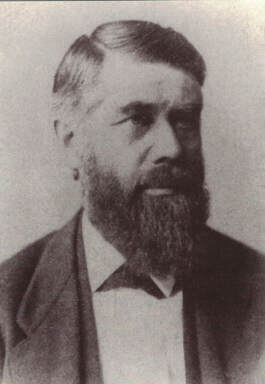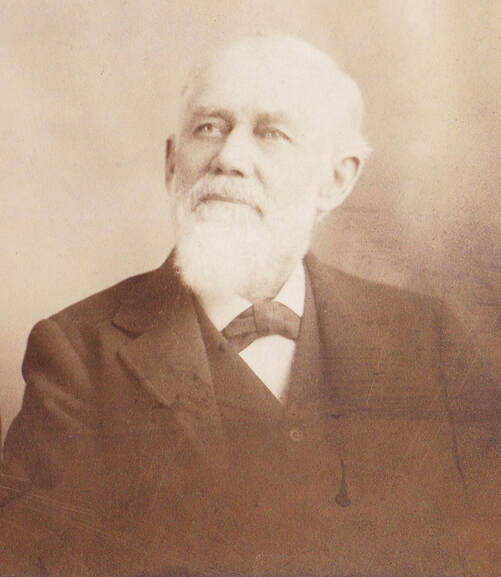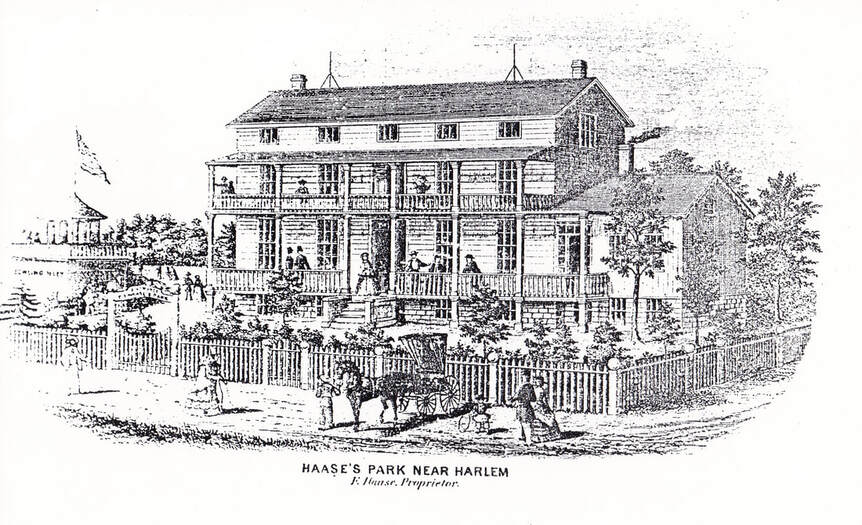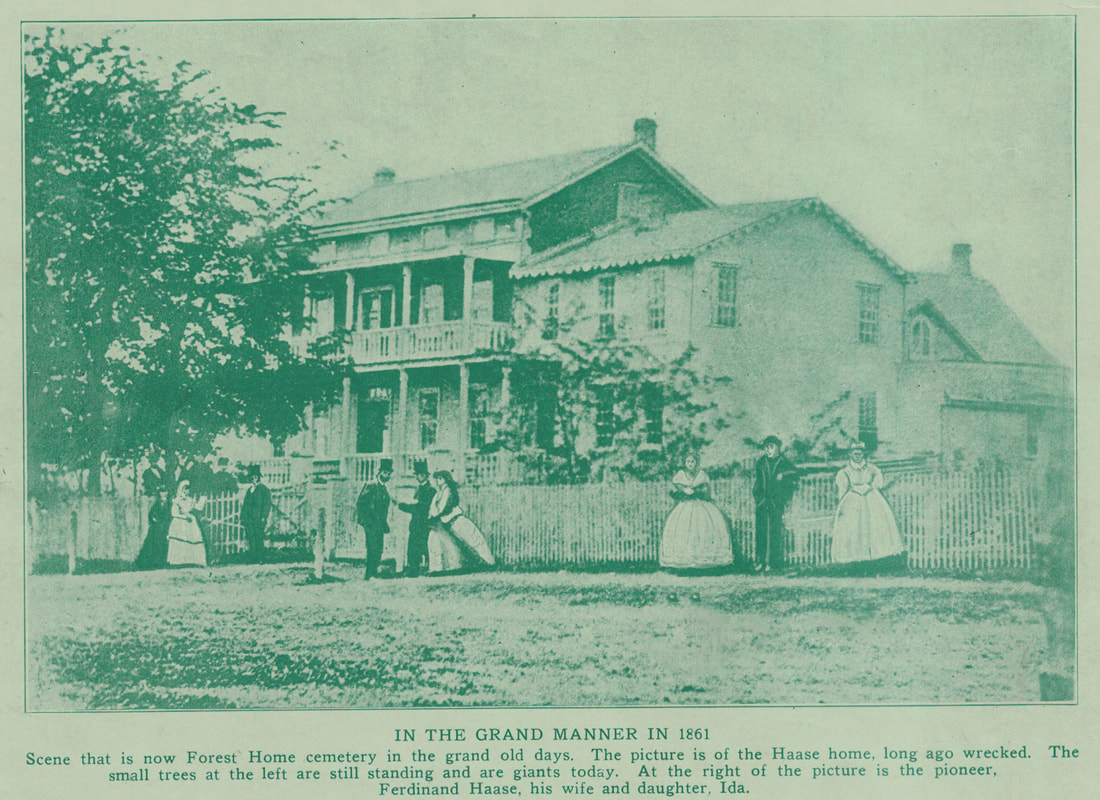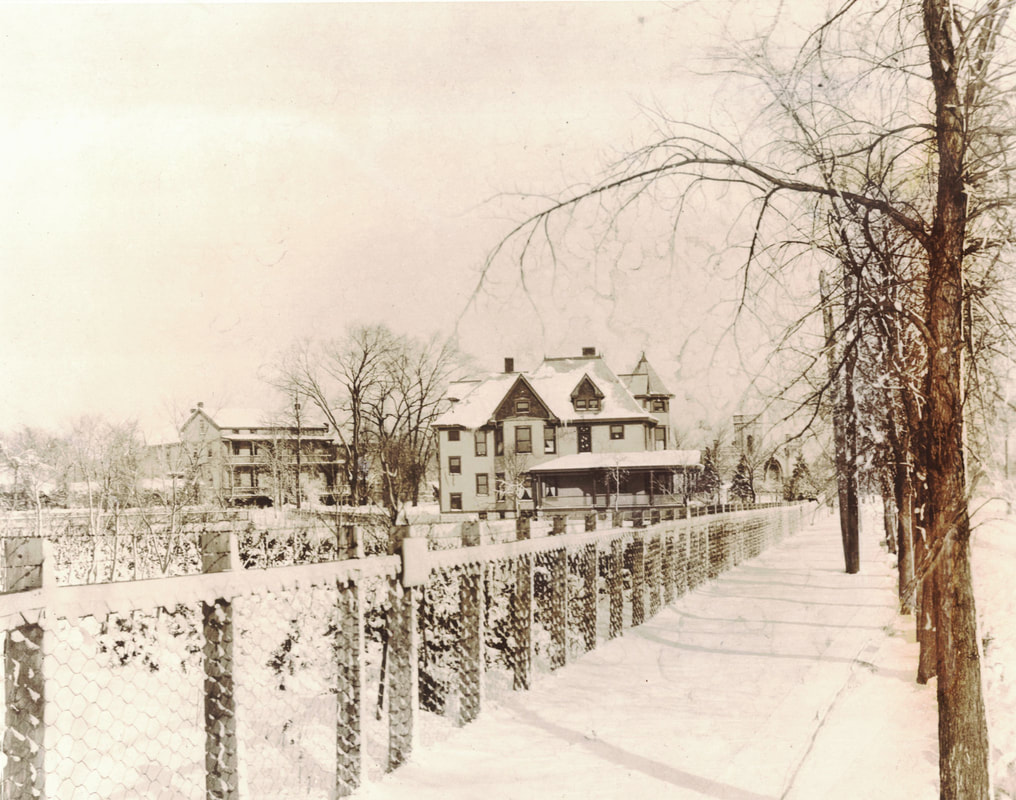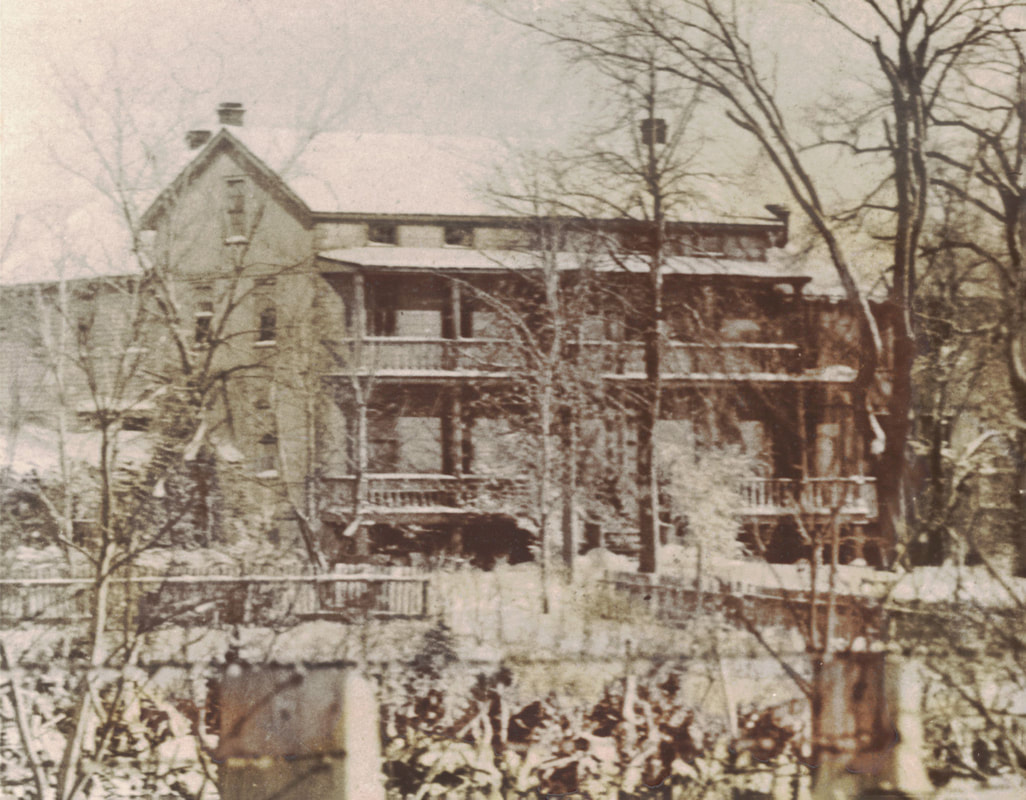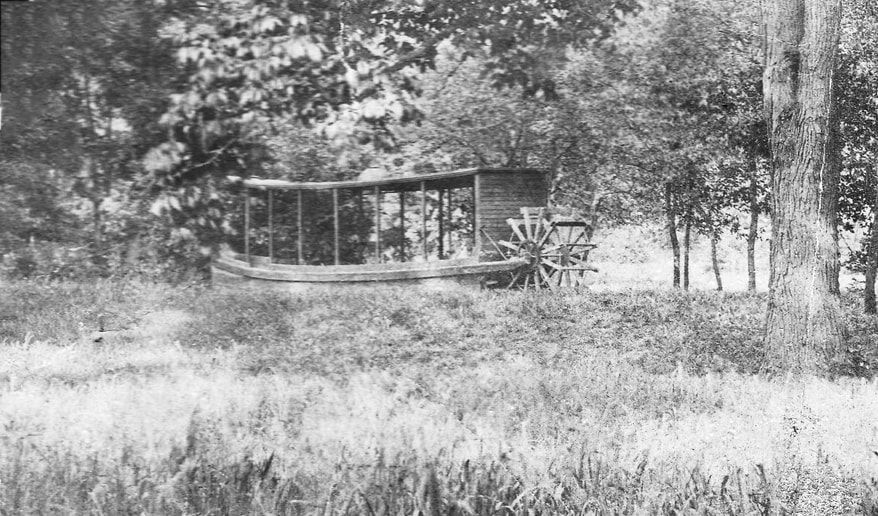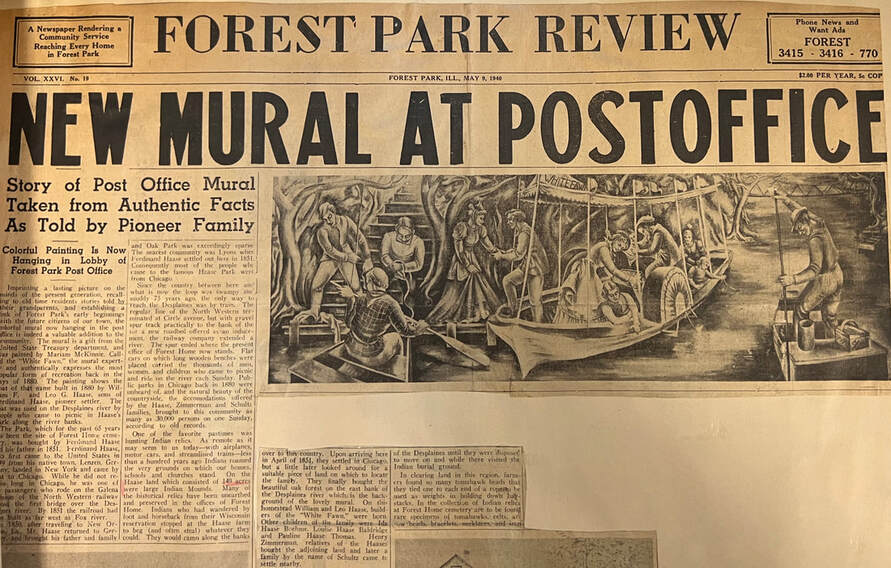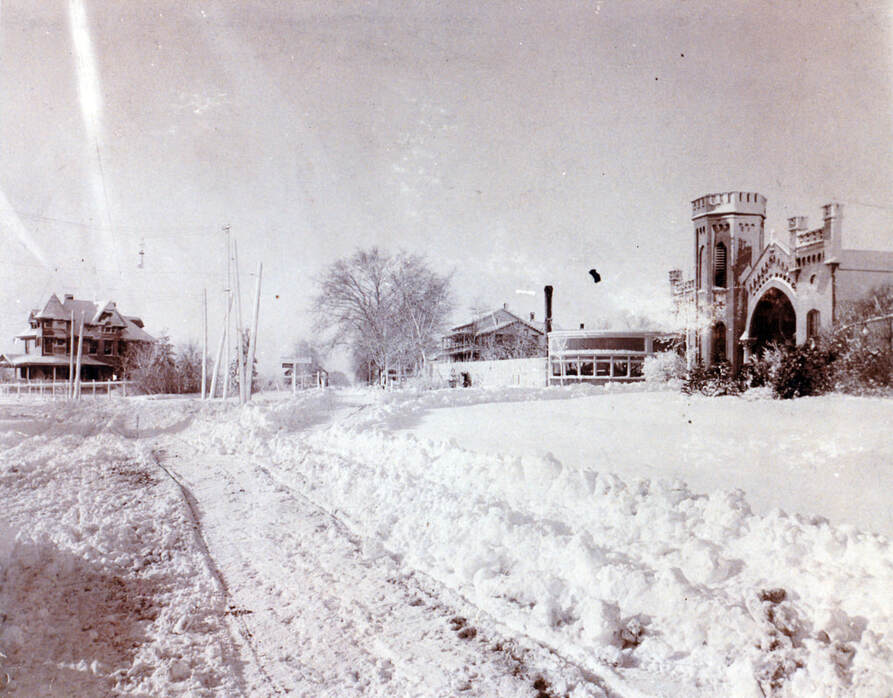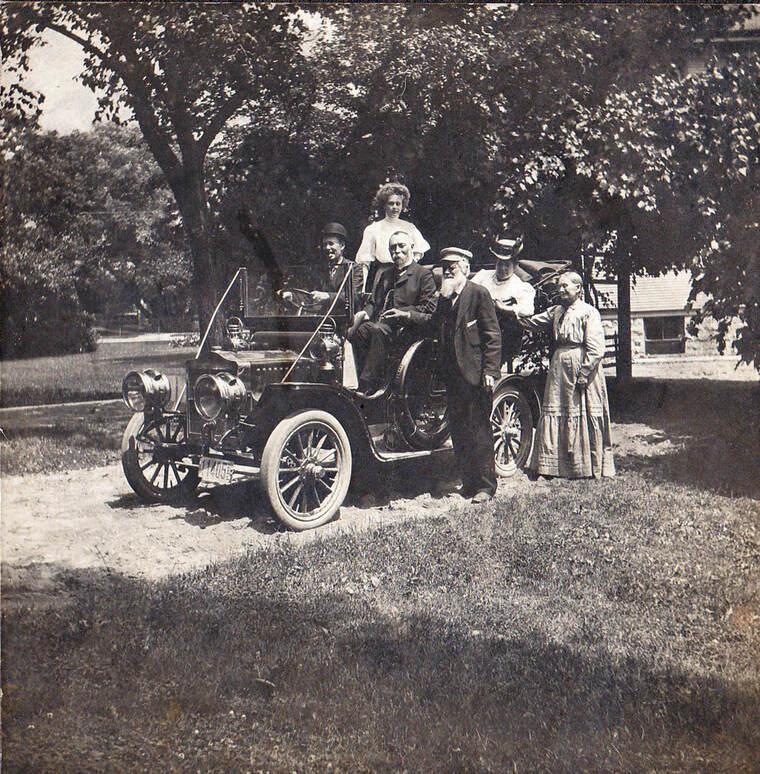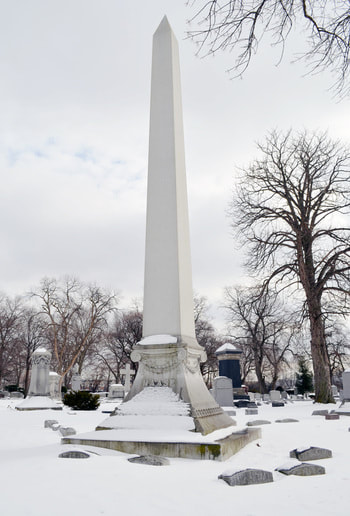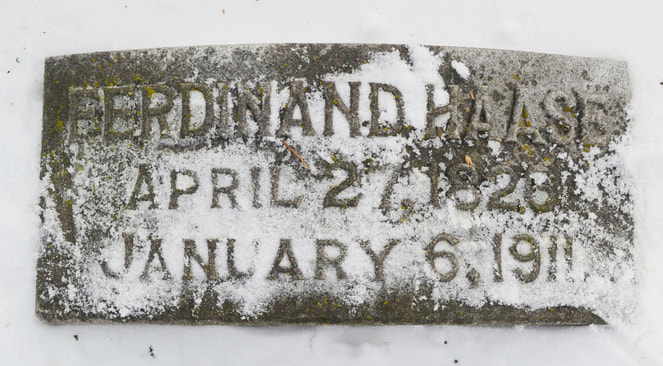Haase Family
“The neighborhood was still wild,” he wrote later to his children. Haase built a henhouse, corn crib and milk cellar. Haase established a dairy farm on his property and continued to acquire land in the area, eventually owning about 248 acres south of what is now Madison Street, bounded by the Des Plaines River, Des Plaines Avenue, and Roosevelt Road.
In the late 1850s, Haase turned his dairy farm into a picnic grove called “Haase’s Park.” Chicagoans visited the beautiful land for picnics, and to facilitate their access to his picnic grounds, Haase made arrangements with the Galena & Chicago Union Railroad (later known as the Chicago and North Western) to facilitate easy access to his picnic grounds. As part of the deal, the railway company constructed a spur line that connected Haase’s Park to the main tracks, in exchange for receiving carloads of gravel required for construction purposes. However, the constant extraction of gravel over the years led to the destruction of the original glacial ridge, significant flattening of the terrain, and the discovery of multiple burial mounds of Native Americans.
One attraction of the park was the White Fawn Ferry that took passenger up and and down the Desplaines River. During the Great Depression the WPA painted a mural of the White Fawn that now hangs in the Forest Park post office.
When Lincoln Park in Chicago opened, attendance at Haase’s Park dwindled and he finally closed the grove.He dammed the Des Plaines River and mined sand and gravel and sold it for income. Haase sold some of his land in 1872 to German Lutherans who established Concordia Cemetery. More acreage was sold the next year to several German fraternal organizations for German Waldheim Cemetery. Accessible by train and with good drainage; the land would make an ideal cemetery. In 1876, Haase and his sons opened Forest Home Cemetery, which remained a family-run burial ground for the next ninety years.
In 1884 residents urged Ferdinand to enter politics, but he declined. His son Leo, however, was elected Highway Commissioner. As more people settled in Forest Park, the community demanded streetlights, water works, and sidewalks. Leo Haase was elected Village Clerk of Harlem (which included today’s Forest Park) and helped incorporate the town of Forest Park.
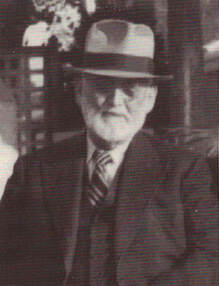 Leo Haase
Leo Haase
Leo was an imaginative entrepreneur who patented a machine for making property markers and manufactured thousands of sidewalks slabs. When brick vaults started to be built in the cemetery, Leo suggested they build cement vaults instead, giving birth to the Wilbert Vault Co.
|
Ferdinand H. Haase, his son Leo, and several other members of his family are buried in
Forest Home Cemetery. Learn about Haase descendants |

